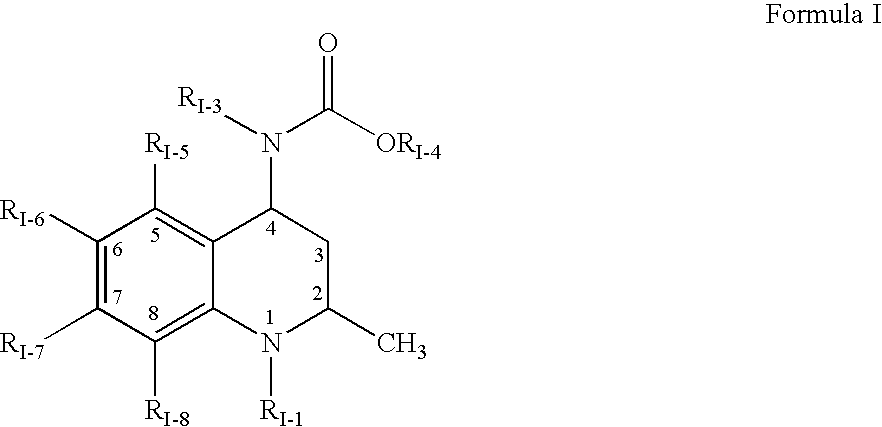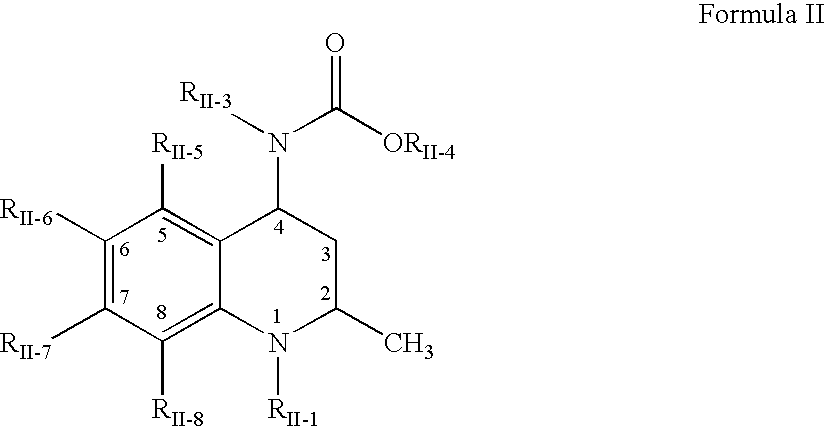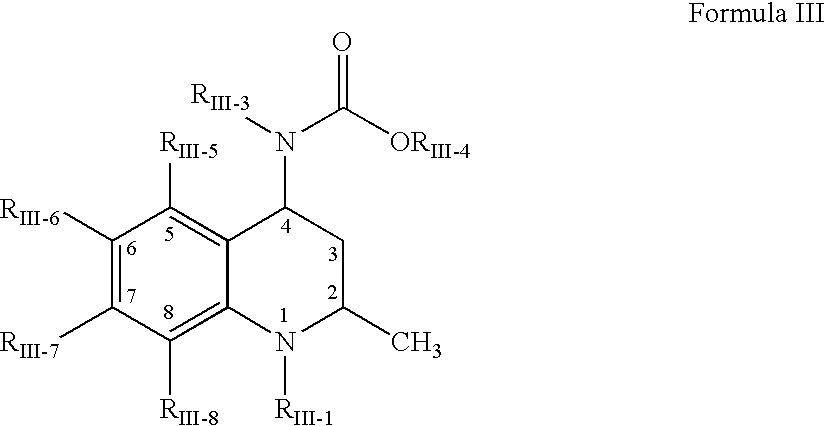Self-emulsifying formulations of cholesteryl ester transfer protein inhibitors
- Summary
- Abstract
- Description
- Claims
- Application Information
AI Technical Summary
Benefits of technology
Problems solved by technology
Method used
Image
Examples
example 1
[1035]This Example (and Examples 2 through 5) illustrates making a composition according to the invention and using it to make softgel capsules containing it.
[1036]Capmul® MCM was heated to 55° C. and mixed. To a 2 liter glass beaker was added 277 gm of Miglyol® 812, 510 gm of triacetin, 318 gm of Polysorbate 80, and 442 gm of Capmul® MCM. After stirring for one hour, this solution was added to 161 gm Compound A and the resulting mixture stirred at ambient temperature for 8 hours with scraping of walls as needed. It was then filtered to remove gross particulates. The amounts (in mg) of each component in the fill per gram of fill are set forth in Table 1.
[1037]The above 100 mgA / mL fill was encapsulated into #10 oval and #5 oval softgels to provide fill volumes of 0.6 mL and 0.3 mL respectively. The doses per softgel are therefore 60 mgA and 30 mgA, respectively. The shell was prepared from gelatin, glycerin, and water.
[1038]
TABLE 1Ingredientmg / gCompound A 94Miglyol ® 812162Triacetin2...
example 2
[1039]Capmul® MCM was heated to 55° C. and mixed. Cremophor® RH40 was also heated to 65° C. with stirring. Then 539 g of Miglyol 812, 998 g of triacetin, 608 g of Cremophor® RH40, and 860 g of Capmul® MCM were combined and mixed for 20 min. To this mixture was then added 312 gm of Compound D and the resulting mixture stirred at ambient temperature for 3 hours with scraping of walls as needed. It was then filtered to remove gross particulates. The amounts (in mg) of each component in the fill per gram of fill are set forth in Table 2.
[1040]The above 100 mgA / mL fill was encapsulated into #2 and #5 oval softgels to provide fill volumes of 0.1 mL and 0.3 mL, respectively. The doses per softgel were therefore 10 and 30 mgA, respectively. The shell was prepared from gelatin, glycerin, and water.
[1041]
TABLE 2Ingredientmg / gCompound D 94Miglyol 812163Triacetin301Cremophor RH40183Capmul MCM259
example 3
[1042]Capmul® MCM was heated to 55° C. and mixed. Alpha-tocopheryl polyethyleneglycol 1000 succinate (TPGS) was also heated to 55° C. with stirring. Then 264 gm of Miglyol® 812, 333 gm of propylene carbonate, 103 gm of TPGS, and 562 gm of Capmul® MCM were combined and mixed for 1 hr. This mixture was then added to 130.4 gm of Compound A and the resulting mixture stirred at ambient temperature for 8 hours with scraping of walls as needed. It was then filtered to remove gross particulates. The amounts (in mg) of each component in the fill per gram of fill are set forth in Table 3.
[1043]The above 100 mgA / mL fill was encapsulated into #11 oblong softgels to provide a fill volume of 0.6 mL. The dose per softgel is therefore 60 mgA. The shell was prepared from gelatin, glycerin, and water.
[1044]
TABLE 3Ingredientmg / gCompound A 94Miglyol ® 812164Propylene carbonate207Alpha-tocopheryl185polyethyleneglycol1000 succinateCapmul ® MCM350
PUM
| Property | Measurement | Unit |
|---|---|---|
| Fraction | aaaaa | aaaaa |
| Fraction | aaaaa | aaaaa |
| Fraction | aaaaa | aaaaa |
Abstract
Description
Claims
Application Information
 Login to View More
Login to View More - R&D
- Intellectual Property
- Life Sciences
- Materials
- Tech Scout
- Unparalleled Data Quality
- Higher Quality Content
- 60% Fewer Hallucinations
Browse by: Latest US Patents, China's latest patents, Technical Efficacy Thesaurus, Application Domain, Technology Topic, Popular Technical Reports.
© 2025 PatSnap. All rights reserved.Legal|Privacy policy|Modern Slavery Act Transparency Statement|Sitemap|About US| Contact US: help@patsnap.com



